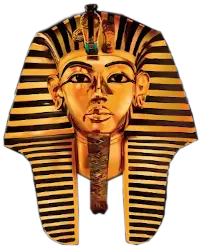
temples carried in front of them two pillars as symbols of the principle of opposites. It is obvious that Aristotle was not the author of this doctrine, but the Egyptians.
(Aristotle's Metaphysics I, 5, 985b, 24; Aristotle's Metaphysics I, 5, 98b, 31).
(Aristotle's Metaphysics I, 6, 987b, 9; Wm. Turner's Hist. of Phil., p. 41; 47; 48).
(Plato's Phaedo, c. 15; c. 16 and c. 49; Parmenides 132D). (Memphite Theology, King-ship and the Gods, by Frankfort, c. 3, p. 25, 26, 35).
(Egyptian Religion by Frankfort, p. 64, 73, 88).
2. The existence of God.
(a) The teleological concept has not only been embraced by Socrates, Plato and Aristotle, but also by the peoples of the remotest antiquity. In the accounts found in the first chapter of Genesis and in the Memphite Theology, found in chapters 20 and 23 of Frankfort's Ancient Egyptian Religion, creation proceeds from chaos to order, by definite and gradual steps, showing design and purpose in nature, and suggesting that it must be the work of a divine Intelligence. The dates of these sources carry us far back into antiquity, many centuries before the time of Aristotle, between 2000 and 5000 B.C.
We are also told that in addition to the teleological concept, Aristotle introduced the concept of the "Unmoved Mover" in order to prove the existence of God. But the "Unmoved Mover" is none other than the Atum of the Memphite Theology of the Egyptians, the Demiurge, through whose command (logos) four pairs of Gods were created out of different parts of his body and who accordingly moved out of him. This act of creation took place while Atum remained unmoved; as he embraced Ptah. Thus the family of Nine Gods was created, and has been named the Ennead. It is quite clear that the concept of the "Unmoved Mover" is derived from the Egyptian theological or mystery system, and not from Aristotle, as the modern world has been made to believe.
Topics
Greek Philospohy is Stolen Egyptian Philosophy
The Memphite Theology is the Basis of all Important Doctrines of Greek Philosophy
Greek Philosophy was Alien to the Greeks
Greek Philosophy was the offspring of the Egyptian Mystery System
The Egyptians Educated the Greeks
The Curriculum of the Egyptian Mystery System
The Pre-Socratic Philosophers and the teaching Ascribed to them
The Athenian Philosophers
1. Socrates
2. Plato
3. Aristotle